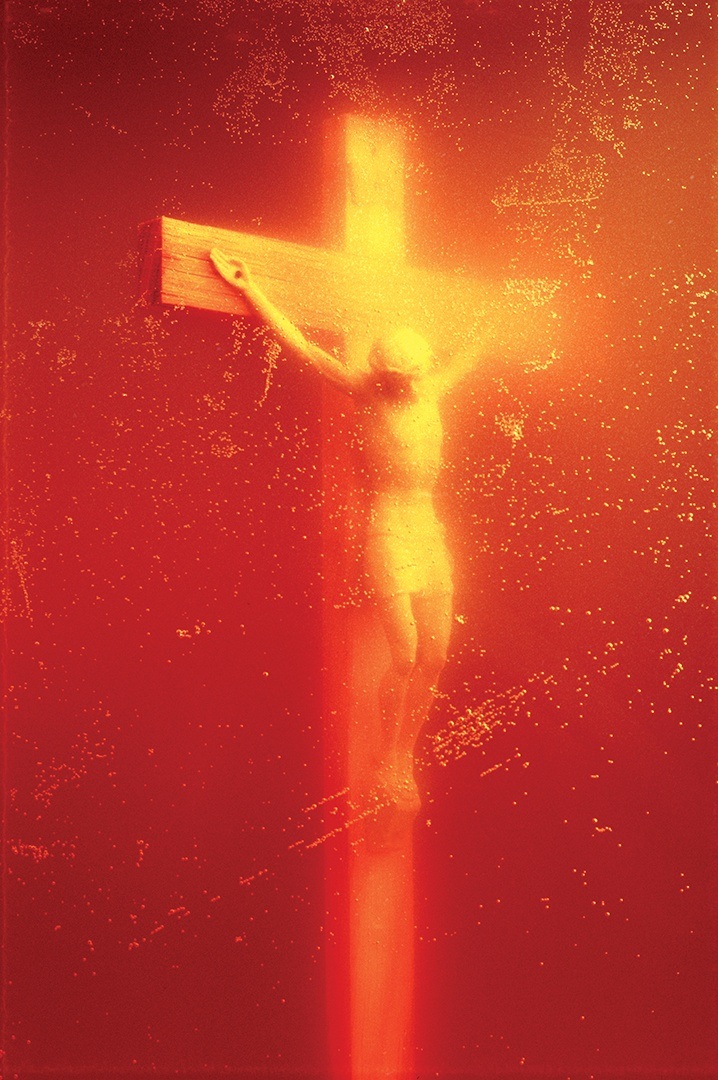Inspired by representations of Christ’s cross in a number of aspects such as the lighting or the staging, the photograph Piss Christ made more than a few headlines. Andres Serrano may have grown up in a strictly religious environment, but his iconic piece garnered its celebrity through its blasphemous nature. Used to working with monochromes, the photographer likes to characterize his works through the organic fluids that compose them. Having previously used blood, milk, sperm, or urine to create art, Andres Serrano found himself in a debacle when he mixed the essence of mortals with the holy realm. Provoking intense debate, the photo became one of the symbolic works of this profoundly religious photographer. “My Catholic education influences this work that allows me to redefine and personalize my relationship with God. My use of bodily fluids (…) is akin to Catholicism’s obsession with “the body and blood of Christ”.
In spite of his doubters and persistent critics, Andres Serrano’s Christ traveled throughout the world and came face to face with his detractors, all united under a single banner: that of a Christian church that refused this “offensive” representation. That’s why this piece, displayed in Avignon, Ajaccio, and Melbourne went through numerous rejections. In Corsica, the piece sparked fundamentalist protests in 2014. It even led to violence in Avignon and in the National Gallery of Victoria, where the work was attacked with a hammer in 1997 and 2011. Its exhibit was cancelled or suspended several times. In Melbourne, while Archbishop George Pell’s request to the Australian Supreme Court to have the piece removed was refused, the hammer attack made the museum’s conservators fear other acts of vandalism on a neighboring exhibit that housed masterpieces by Rembrandt.
Finally, this urine-soaked liturgical object remains first and foremost a means to denounce commercialization and the banalization of Christian icons, as affirmed by the artist: “I’m in no way a blasphemer, and I have no sympathy for blasphemy.” According to the photographer, the use of blood and urine allowed him to recall the Passion of the Christ, marked by physical degradation and real suffering. Among the diverse theologians asked to sound in on the subject of this controversial work, opinions are mixed. While some denounce a “provocation”, others such as François Boespflug are more nuanced. While calling on Christians to “ride out the storm”, he recalls that the use of religion in art – and particularly of the crucifix – became subversive at the dawning of the 20th century. Already in 1878, Félicien Rops broke the existing pact of non-aggression with religious symbols by representing a woman anguishing on the cross instead of Christ. Invoking the existence of a right to blasphemy under the heading of freedom of expression, the historian/theologian rightly shed a light on a subject that was still under debate on the international stage. This preoccupation was bypassed only by artistic recognition of Andres Serrano’s work, awarded the “Awards in the Visual Arts” prize in 1989 for Immersion and subsidized by American public funds.

Leave a Reply